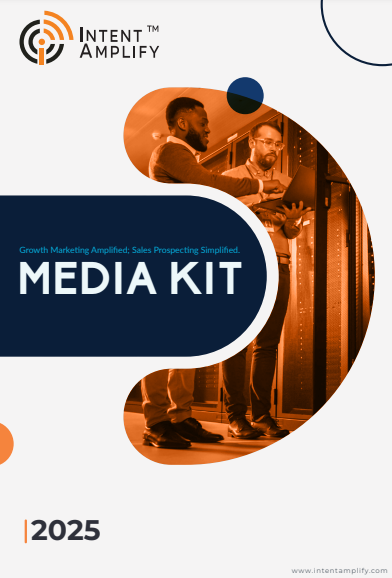
How to Rank on ChatGPT in 2026: A Practical Playbook for B2B Marketers
- Last updated on: October 28, 2025
B2B search behavior has changed. Buyers are no longer relying only on Google to validate solutions. They are asking ChatGPT to explain models, compare vendors, outline best practices, and clarify buying criteria. This shift has created a new form of digital visibility. Today, brands must learn how to rank on ChatGPT in 2026 and appear in AI-generated answers that influence early-stage decisions.
This article outlines a clear playbook for ranking within AI-driven answer engines. It is designed for revenue leaders, ABM strategists, SaaS marketers, and B2B organizations navigating complex deal cycles.
Why Ranking on ChatGPT Matters in B2B?
79% of consumers expect to use AI-enhanced search within the next year.
ChatGPT functions as a real-time advisor for buyers. It summarizes insights , compresses research time and shapes first impressions before your website appears. If your brand is included in these responses, you gain instant authority. If your brand is missing, you lose the attention window before sales engagement.
Artificial intelligence and generative AI may be the most important technology of any lifetime. – Marc Benioff, CEO of Salesforce
Traditional SEO ranking is about showing up after a search query. AI ranking is about being pre-selected as the answer. The channel has changed. The competition has changed. The visibility model has changed.
What Ranking on ChatGPT Really Means
Ranking on ChatGPT does not mean earning a keyword position. It means:
- Your frameworks are repeated across multiple sources.
- Your insights are referenced by topic experts.
- Your definitions become the standard explanation.
- Your brand appears naturally in contextual summaries.
AI models reward information that is clear, structured, and recognized across multiple credible sources. To rank on ChatGPT in 2026, we focus on three pillars:
- Topic Authority
- Machine-Readable Structure
- External Signal Density
Let’s break each down and guide the execution step-by-step.
Pillar 1: Build Topic Authority in Your Category
ChatGPT prioritizes depth, clarity, and usefulness.
The model identifies brands that demonstrate consistent expertise around a topic.
Step 1: Identify Your Topic Cluster
Choose a core category aligned with your positioning. For example:
- Account-Based Marketing for Enterprise SaaS
- Sales Development Automation for Fintech
- Cloud Compliance for Healthcare Software
Stay narrow. Depth outperforms general coverage.
Step 2: Map Buyer Question Patterns
Buyers ask natural questions. For example:
- “What is ABM in enterprise sales?”
- “How does lead scoring actually work?”
- “Best B2B email outreach frameworks?”
Collect these questions from chat prompts, sales calls, and webinars. List the top 25–40 recurring buyer questions.
Step 3: Create Answer-First Content
Each piece of content must:
- Start with a direct answer
- Explain reasoning in simple terms
- Provide a repeatable framework
- Give one real-world scenario example
Example format:
- What is Lead Qualification? – Lead qualification is the process of verifying buyer fit and intent before sales engagement.
- Why It Matters: It prevents pipeline waste and increases sales efficiency.
3-Step Framework:
- Fit check
- Intent signal check
- Timing confirmation
Example Scenario: A SaaS security vendor qualifies enterprise teams based on industry compliance triggers. Short. Clear. Useful. Reusable.
Pillar 2: Make Content Machine-Readable
AI models prefer content that is structured and simple to interpret.
Step 4: Use Clear Headings and Short Sentences
- One idea per sentence
- One concept per paragraph
- Remove fluff and filler language
Clarity increases your chance of being referenced.
Step 5: Add Definitions and Glossaries
Models rely heavily on definitions.
Create a glossary that defines terms in your category.
Example:
- Intent Data – Behavior signals indicating active research.
Content Syndication – Distribution of content across third-party networks to expand reach. - ABM Play – Targeted sequence of multi-channel engagements across selected account lists.
If your definitions gain traction, your brand becomes a default reference.
Step 6: Use Structured Formats
Use:
- Numbered steps
- Framework diagrams
- Checklist blocks
- Comparison tables
AI extracts structured content more easily than narrative explanations.
Pillar 3: Increase External Signal Density
ChatGPT references information that appears consistently across sources.
Your organization must exist across multiple content ecosystems.
Step 7: Publish Author-Linked Thought Leadership
Every article should list a visible author with:
- Name
- Role
- LinkedIn profile
Consistency in expertise builds credibility signals.
Step 8: Expand Mentions Across Industry Channels
Use:
- Podcasts
- Webinar transcripts
- Guest articles
- Roundtable Q&A reports
- Co-authored research summaries
These formats increase your likelihood of being referenced.
Step 9: Contribute to Other People’s Definitions
If analysts publish lists or definitions, join the conversation. Become the source that explains or clarifies the topic. Visibility compounds.
How ChatGPT Ranking Differs from Google SEO
Ranking on ChatGPT isn’t about traditional keywords, backlinks, or domain authority – it’s about how useful, clear, and context-aware your content is when a user asks a question. ChatGPT doesn’t just pull links; it interprets intent and generates answers.
That means your content needs to be structured in a way that makes it easy for AI to understand what you do, who you help, and why your solution matters. Clear topical clusters, FAQ-rich pages, real examples, and concise benefit-first messaging are the new ranking signals. In simple terms, if a human can quickly understand your value, AI will too. The more your brand sounds like a trusted guide instead of a keyword-stuffed blog, the more likely it is that ChatGPT will include your company in its recommendations.
Practical Example: Transforming an Existing Blog
Original Blog Opening – Enterprise ABM success requires knowing how to integrate marketing and sales strategies across pipelines.
AI-Ready Rewrite – Enterprise ABM aligns sales and marketing teams around shared account outcomes. Alignment increases qualification accuracy and revenue efficiency.
3-Step Alignment Model:
- Unified account selection
- Shared engagement sequences
- Joint pipeline accountability
Clear. Short. Structured. AI-friendly.
Measurement: How to Know You Are Ranking
Track:
- Screenshots of ChatGPT responses that reference your ideas
- Growth in branded search and conversation mentions
- Increase in inbound requests during early research stages
- Shorter sales call education time
These metrics show your narrative is shaping buyer understanding.
How Intent Amplify® Helps Brands Rank on ChatGPT
Intent Amplify supports B2B organizations with:
- Topic authority strategy
- AI-ready content architecture
- Content syndication across decision networks
- ABM-driven brand visibility across buying committees
We ensure your expertise becomes the recognized industry explanation.When your insights become the reference point, your brand becomes the default choice.
Final Thought
Ranking on ChatGPT in 2026 is not an SEO trick.
- It is a clarity game.
- It is a consistency game.
- It is a reputation game.
The brands that win will explain their market better than anyone else.
FAQs
1. What does “ranking on ChatGPT” mean?
Ranking on ChatGPT means your brand is included or referenced in the AI-generated response when a user searches for a topic or solution in ChatGPT. Instead of ranking on a search page, you are aiming to be cited, summarized, or recommended by conversational AI.
2. How is ranking on ChatGPT different from ranking on Google?
Google ranks content using backlinks, keywords, and domain authority. ChatGPT ranks information based on context clarity, authority, structured content, and relevance to the query. It prioritizes useful content over SEO tricks.
3. Do traditional SEO practices still matter?
Yes – but with adjustments. Keywords and structure matter because they help AI understand your topic. However, content must also be context-rich, example-driven, and written in natural language, not keyword-heavy.
4. What type of content performs best on ChatGPT?
Content that answers clear questions, contains real explanations, uses FAQ formats, and provides practical insights. Think frameworks, steps, case outlines, and comparisons — not vague sales content.
5. Can brands influence ChatGPT recommendations?
Yes – by improving topical authority, internal consistency, and brand clarity. The more your digital presence shows expertise and credibility, the more likely ChatGPT will reference you.




